CLYDEBANK TOWN HALL, including museum, Dumbarton Road, Clydebank.
This now includes GALLERY 5
ACCESS : Easy access for all. Check opening times. Main entrance is now via the side door in Hall Street. Signage is almost non-existant!
B listed.
Note that the gallery and museum function has changed. See CLYDEBANK LIBRARY, DUMBARTON ROAD, CLYDEBANK which now has a Museum, Local History and Archives in the basement.
Also see ART OF WEST DUNBARTONSHIRE : index.asp?pageid=716911
This “B” listed building was restored some years ago with significant internal alterations to change the layout to something more practical and appropriate. It now houses not just a restored town hall, but various function rooms, art gallery, museum and display rooms as well as a coffee shop. [The coffee shop is not currently operating]. There are displays of Singer Sewing Machines (see SINGER index.asp?pageid=719117) and ships reminding us of the area's once important and prominent industries. One of the art gallery spaces looks out onto an enclosed garden where the “slipper baths” once stood. An area along Hall Street used to be a police station. Across the road was the fire station, now flats.
Almost the whole block had been civic facilities comprising the town hall, council chambers, the police station and the Bruce Street Baths. And therein lay an issue when seeking to renovate the complex. Listed Building criteria clearly define that anything within the curtilage of a property is included in a listing. However West Dunbartonshire Council wished to demolish the baths. To them it was a separate property and not listed. The listing text made no specific mention of them.
The compromise was that the slipper baths be demolished and it is that space that is now a pleasant garden viewed from the Garden Gallery - part of the original facade remaining as a backdrop. The main bath though remains almost intact. It is hoped that one day it will be reused somehow, if not as a swimming pool, then perhaps an exhibition and museum area. See BRUCE STREET BATHS index.asp?pageid=715658
The Clydebank Town Hall building itself is listed as “B”. It is considered to be in the Renaissance style as interpreted in 1902 by architect James Miller. The clock tower which you see to the left of the photograph forms a focal point on Dumbarton Road.
The premises got off lightly during the Clydebank Blitz. The cupola was crowned by a large statue of Mercury. This came down, not during the attacks, but during a hurricane in 1968. It stood since then in the foyer until cleverly integrated into the renewal designs internally, lit from a rooflight with the tower rising above. The sculptor was Albert Hemstock Hodge.
As at 2024 further maintenance and alterations have been done, but the impact of covid has impacted on visitor numbers, events and the cafe (which is closed).
The MUSEUM AND GALLERY within the building currently has an exhibition of Fine Art by Women artists in Scotland from the WDC Collections. A look at some of the iconic artists working during the 20th century.
The smaller GALLERY 5 has the Wee Scottish Art group exhibition. This community gallery is showcasing a wide variety of work by the group. Work is for sale. (Last day for exhibition Tuesday 17th September 9.30am – 4.30pm).
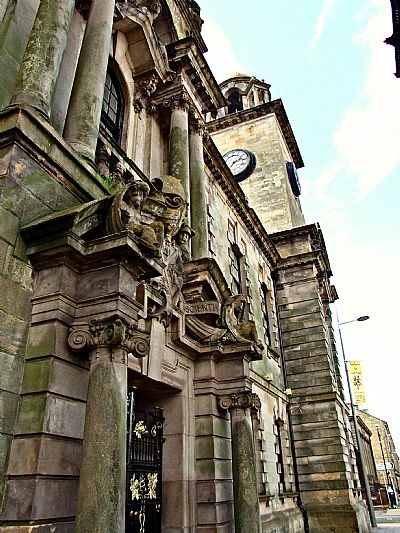
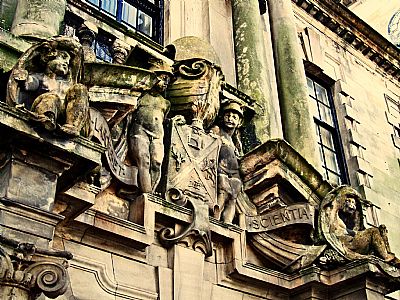
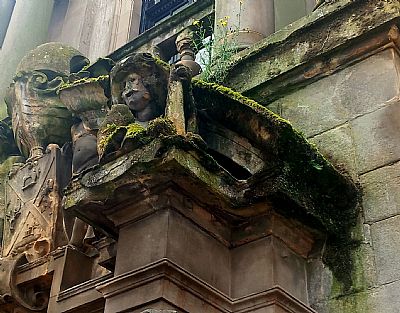
Most of the photos on this page were taken some years ago after the restoration work. A visit in 2023 shows up the disconcerting condition of some of the stonework above the main entrance.
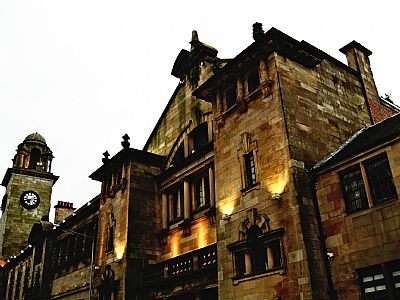
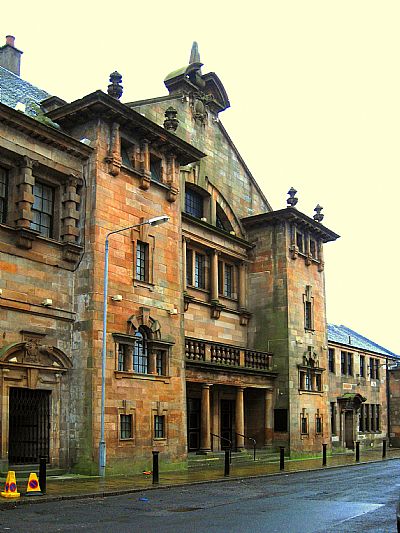
This side entrance in Hall Street is now used as the main entrance.
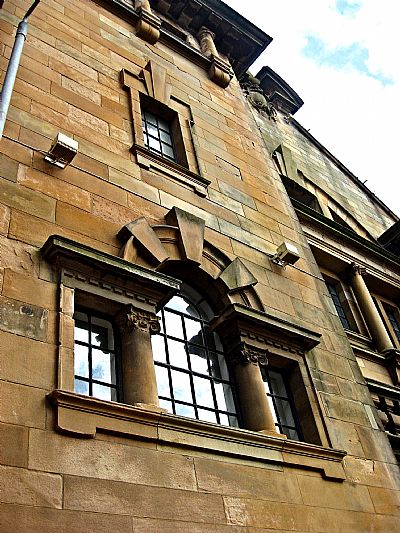
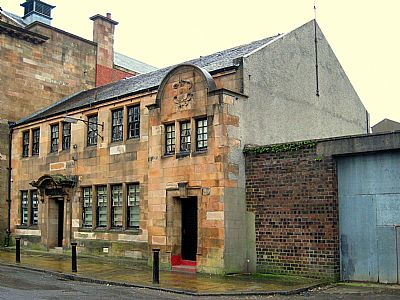
This section was the police station.
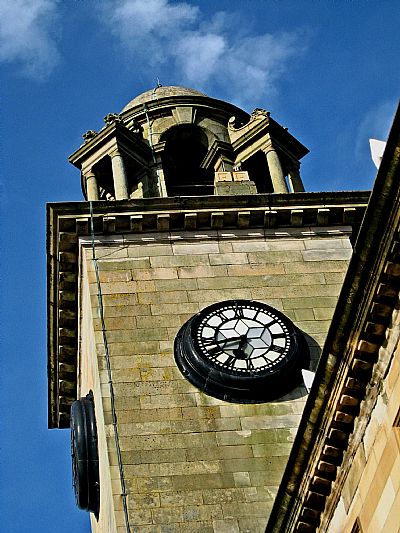
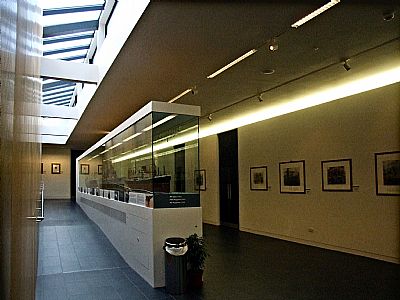
The main display gallery. Beyond that is the Garden Gallery for art. To the left is another display gallery and a section for visiting exhibitions. Note that as from mid-2025, the gallery and museum functions have changed and are instead housed in the Clydebank Library just a short distance away.
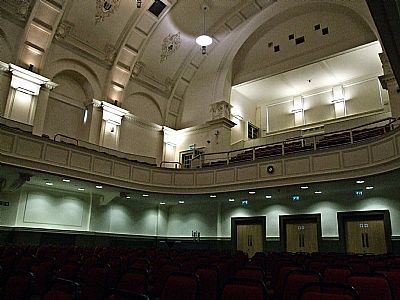
The Main Hall.
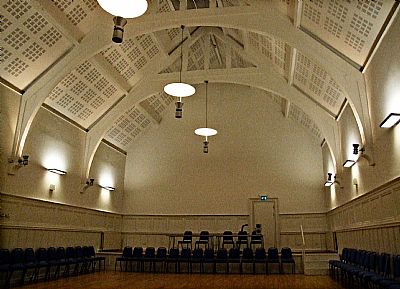
The Lessor Hall.
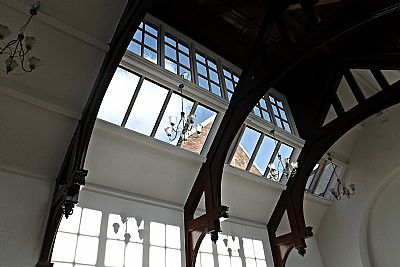
The Ceremony Room
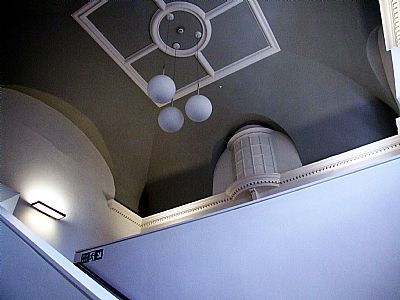
The hall upstairs.
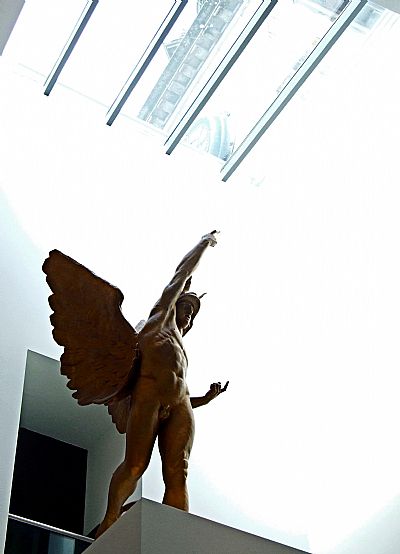
The statue of Mercury which not so much flew, as fell from the roof during a storm. it now stands proudly below a rooflight within the building.
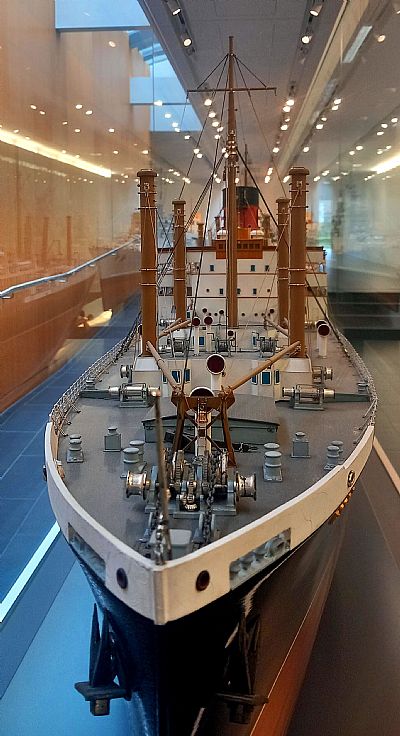
The model ship display. This is the ESSEX.
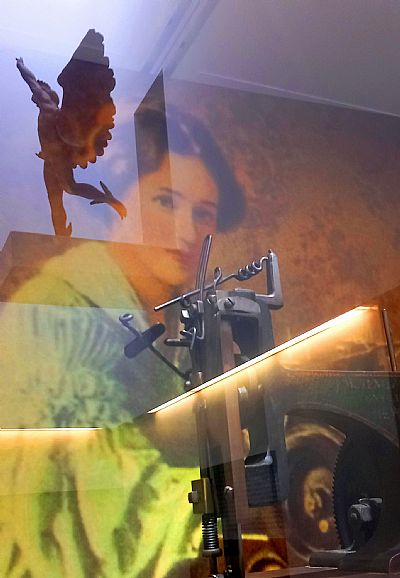
Reflections in a display cabinet naturally form their own collage with Mercury, a Singer sewing machine and promotional artwork.
ALSO SEE : Bruce Street Baths index.asp?pageid=715658 & ART OF WEST DUNBARTONSHIRE index.asp?pageid=716911
BRITISH LISTED BUILDINGS : http://: http://www.example.comhttp://www.britishlistedbuildings.co.uk/200371067-edinburgh-cammo-house-stables-edinburgh#.WOt-y6FrjIU
WEST DUNBARTONSHIRE COUNCIL website : http://www.west-dunbarton.gov.uk/leisure-parks-events/clydebank-town-hall/ & http://www.west-dunbarton.gov.uk/leisure-parks-events/museums-and-galleries/collections/buildings/public-halls/halls-clydebank/clydebank-town-hall/
WEST DUNBARTONSHIRE HERITAGE TRAIL BROCHURE : https://www.west-dunbarton.gov.uk/media/2619058/clydebank.pdf

